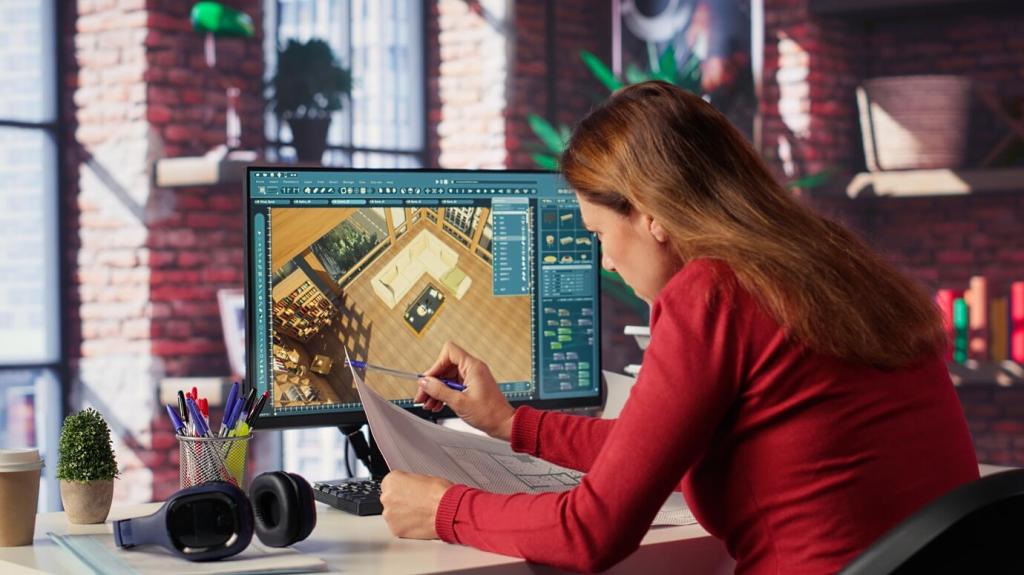How VR Technology is Revolutionizing Home Renovations
Virtual Reality (VR) technology is dramatically transforming the way homeowners, architects, and contractors approach the world of home renovations. With immersive, interactive experiences, VR is replacing guesswork and abstract drawings, directly connecting imagination with reality. This cutting-edge technology enables clients to step inside their future homes before a single nail is hammered, creating new opportunities for visualization, collaboration, and project management. VR is quickly shifting from a futuristic concept to a practical tool for designing, planning, and executing renovation projects, marking a new era in the world of home improvements.
Immersive Visualizations: Seeing is Believing
Before VR, homeowners often struggled to grasp how renovation plans would translate into actual spaces. Now, with VR, they can move around within digital mockups of their redesigned rooms, observing every detail at life size. This allows for instant feedback and practical design changes, bridging the gap between concept and reality. Homeowners gain peace of mind, eliminating much of the anxiety that comes with imagining drastic changes, as they get a true sense of scale, proportion, and flow within their future home.

Smoother Collaboration Between Stakeholders
Miscommunication between professionals and clients has long been a source of frustration in renovations. VR creates a common language by presenting spaces as immersive environments everyone can understand. Homeowners unfamiliar with construction terminology are no longer left in the dark—they can point, comment, and edit within the 3D environment. This transparency fosters trust and empowers clients, making them active participants instead of passive recipients in the planning process.
Bringing together various stakeholders—such as family members, project managers, and designers—into a VR simulation fosters genuine collaboration. Real-time updates and modifications can be discussed and witnessed by all parties simultaneously, narrowing down options efficiently and democratically. VR also makes remote collaboration possible, enabling distant relatives or busy professionals to participate fully in decisions that shape the home’s future.
For contractors, VR is a game changer in terms of preparation and execution. With access to exact specifications laid out in a virtual environment, builders can plan logistics, anticipate challenges, and ensure that installations fit perfectly with the design intent. Contractors can ‘walk through’ projects before breaking ground, identifying potential issues and proposing solutions beforehand, which can reduce delays and costly errors once construction begins.
Streamlining Design Revisions
Design in the traditional sense has always been an iterative process, often plagued by slow feedback and tedious rounds of revisions between drawings, clients, and builders. VR transforms this dynamic by providing a platform for instantaneous design changes. As a result, revisions that previously took weeks can now be explored within hours. Teams can observe solutions in context, leading to faster consensus and smoother transitions from planning to execution.
Anticipating and Eliminating Potential Pitfalls
VR’s detailed simulations provide the foresight necessary to spot and fix issues before they become costly construction problems. By virtually constructing every element, from plumbing to electrical outlets, stakeholders can identify logistical obstacles or design discrepancies that might otherwise be missed. Pre-emptive corrections in the digital space save time and money during actual construction, leading to higher-quality renovations and greater client satisfaction.
Accelerating Material Orders and Scheduling
With VR-generated models providing precise measurements and clear plans, the renovation timeline becomes far more predictable. Suppliers can receive exact specifications, expediting material orders and reducing the likelihood of errors or overages. At the same time, contractors can allocate resources and create more reliable project schedules. A process that once depended on rough estimates and reactionary planning becomes proactive, organized, and vastly more efficient.
Previous slide
Next slide
